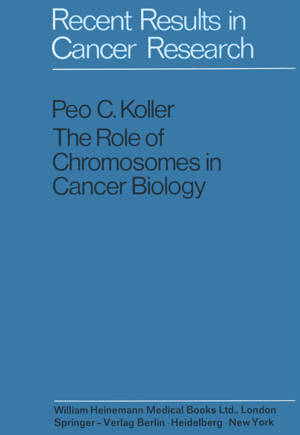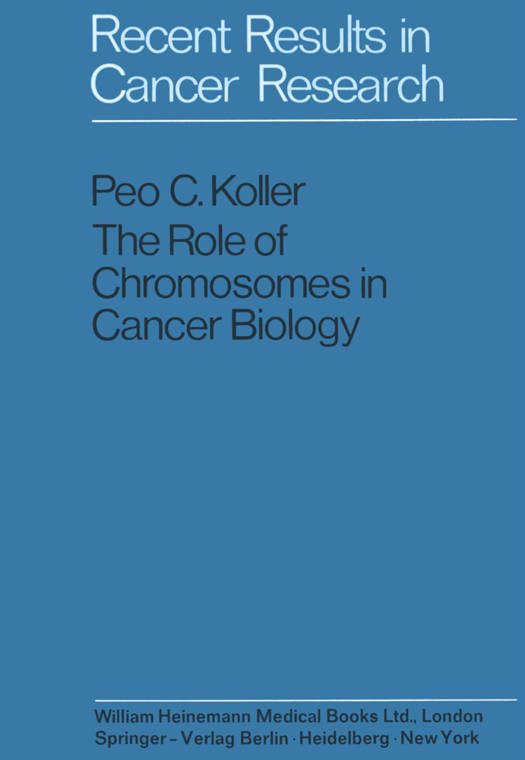
Je cadeautjes zeker op tijd in huis hebben voor de feestdagen? Kom langs in onze winkels en vind het perfecte geschenk!
- Afhalen na 1 uur in een winkel met voorraad
- Gratis thuislevering in België vanaf € 30
- Ruim aanbod met 7 miljoen producten
Je cadeautjes zeker op tijd in huis hebben voor de feestdagen? Kom langs in onze winkels en vind het perfecte geschenk!
- Afhalen na 1 uur in een winkel met voorraad
- Gratis thuislevering in België vanaf € 30
- Ruim aanbod met 7 miljoen producten
Zoeken
Omschrijving
For many years Professor KOLLER has possessed an international reputation in the fields of cytogenetics and karyology, both in their fundamental aspects and in their relation to the problems of tumour causation, especially to the role of heteromromatin, and few men have made a greater contribution. The role of the mromosome complex in carcinogenesis has exerted a natural fascin- ation for many decades, but there can be little doubt of the great advances in know- ledge and understanding whim have accrued of recent years. Although it is probable that the key event in the inception of particular tumours resides in a delicate molec- ular rearrangement, and is hence undetectable by conventional microscopical methods, nevertheless a large proportion is accompanied by karyotypic variation and relatively gross changes in mromosomal number, order and arrangement, witness tlie discovery of the Philadelphia mromosome and its consequences. Further, any such manges in the mromosomal apparatus must inevitably be attended by profound repercussions in the cytoplasm with all that this must mean in protein synthesis and cellular behaviour.
Specificaties
Betrokkenen
- Auteur(s):
- Uitgeverij:
Inhoud
- Aantal bladzijden:
- 124
- Taal:
- Engels
- Reeks:
- Reeksnummer:
- nr. 38
Eigenschappen
- Productcode (EAN):
- 9783642806827
- Verschijningsdatum:
- 21/12/2011
- Uitvoering:
- Paperback
- Formaat:
- Trade paperback (VS)
- Afmetingen:
- 170 mm x 244 mm
- Gewicht:
- 240 g

Alleen bij Standaard Boekhandel
+ 237 punten op je klantenkaart van Standaard Boekhandel
Beoordelingen
We publiceren alleen reviews die voldoen aan de voorwaarden voor reviews. Bekijk onze voorwaarden voor reviews.









